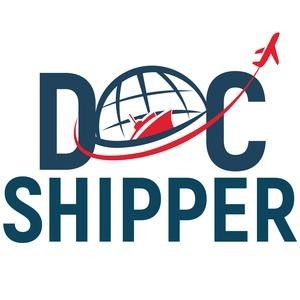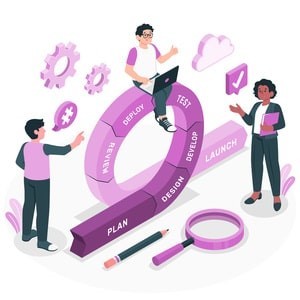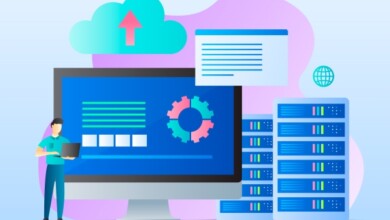How Is DocShipper Breaking the Codes of the Import-Export Industry?

The sanitary crisis of COVID-19, which is still present, has no longer the same impact on international trade and therefore on the world economy, which is recovering. Growth is undeniable, even if there are imbalances between countries, both in the import and export of goods. A little more patience and the supply chain should regain a certain fluidity. The best is coming, and it’s one of the reasons we have to think differently and innovate regarding import/export operations, and DocShipper has understood this need for renewal.
DocShipper’s Story
The company stands out of its essence. Indeed, DocShipper is able to offer its customers a 360° experience in the import-export sector. Its main activities are Sourcing, Shipping, and 3PL (Third Part Logistics).
By offering these three services, the company enables a customer to be accompanied from the beginning to the end of his purchase.
The first activity is sourcing, which includes every step from writing the specifications, to the selection of the supplier, through negotiation, auditing, and sampling, DocShipper is here to ensure that the customers get the best products, and always at the best price.
Next, the company handles the shipping of its customer’s goods with a global chartering service, made possible by its international coverage. The customer doesn’t have to worry anymore, DocShipper is here during the whole shipping process.
Finally, the 3PL service was created for customers wishing to start an e-commerce business and need a company to store, do the inventory and distribute their products worldwide. Thanks to its strategically located distribution center (Northern Italy), DocShipper can care about all this process.
DocShipper has 11 years of experience in the import/export field and is the only one to offer the combination of these three services in one company, this innovation is due to the determination of the CEO, Nicolas Rahme who resume DocShipper’s goal in one sentence: “Our challenge? To satisfy all the dissatisfied customers of the import-export giants”.
The problems of the archaic import/export industry
The concept of international import and export seems to have been created near the Roman Empire era, and although it has evolved considerably, certain problems related to the functioning of operations seem to persist due to the lack of renewal in this sector.
Multiple Stakeholders
 One of the first issues of the import/export industry is the number of stakeholders in the supply chain. In fact, when a product is purchased for the purpose of being imported, it has to pass through numerous hands before it reaches its destination.
One of the first issues of the import/export industry is the number of stakeholders in the supply chain. In fact, when a product is purchased for the purpose of being imported, it has to pass through numerous hands before it reaches its destination.
First, it has to be manufactured by suppliers who can be controlled and audited, then the product is tested by laboratories and controlled by quality controllers before being packed and transported by a freight forwarder before being delivered to the importer. Sometimes its importer will also have to call warehousing companies to stock it, or even 3PL enterprise for the inventory, warehouse, and delivery. A very long list of stakeholders involved for one item.
Expertise issue
But these stakeholders are not the only links in the purchase process that an importer must take into consideration. The first step will be to negotiate with the supplier to ensure the best quality and price for the product, but other important steps are coming.
In fact, the buyer will also have to pay attention to the production process, the logistic part which includes customs, taxes, and duties, choose the appropriate chartering and don’t neglect the rules and regulations to import this product. These steps have to be prepared and not every importer has enough experience and competencies to do it correctly, in fact, the buyer has to be an expert if he doesn’t want unpleasant surprises.
Generic issue
Obviously, the importer will have to face other issues than expertise ones related to the international context of the importation. We have previously talked about the negotiation with the supplier, who, in the major part of the time, will come from Asia. Here, this is the first challenge that the importer will face, the language barrier.
To negotiate prices and quality, the buyer will have to contact the supplier, even if English is an international language, not every provider understand it then the importer will have to speak Mandarin, Thai or even Vietnamese to be well understood. The language is not the only difference with the supplier, culture should also be taken into account, and negotiation is a part of Asian culture, the importer will have to master it if he wants to be credible.
Finally, the last challenge will be the geographic distance and time lag, which could be an issue to contact the supplier and keep an eye on the production of its goods. All these details will have to be well managed by the importer, who, if he’s not an expert, will face several challenges.
The consequence
 There are various consequences of all these issues. The first could be not having good visibility on the operation, which could be traduced by a misunderstood with the supplier on the quality requirement or the deadlines.
There are various consequences of all these issues. The first could be not having good visibility on the operation, which could be traduced by a misunderstood with the supplier on the quality requirement or the deadlines.
In this case, both the supplier and the importer will reject the fault of the other, and it will be difficult to find who was wrong. When this kind of issue happen, the order can be delayed or the imported product could be different from the one the importer spend money on. These factors are a huge loss of time and money for the buyer, who will lose control and make its business negatively impacted.
How does DocShipper solve these problems?
Thanks to its expertise, DocShipper know all the issues an importer could be confronted to, and this is the reason they want to revolutionize the importation cycle with its business model.
Unique interlocutor
By rely-on DocShipper, the customer will be supported from A to Z. This is one of the main particularities of DocShipper and what makes the company unique : to be the only interlocutor of the customer who wants to import a product.
DocShipper will be there to help on each step of the importation and can provide numerous services depending on the customer’s needs. In other words, an importer can call DocShipper if he needs to be supported from the specifications writing to the delivery of its product, or even only for sourcing trusted suppliers in Asia, the quality control, the shipment, or the warehousing and distribution of its item. DocShipper’s offer is totally customizable and there are no hidden costs, just time saving by relying on a unique company.
Multilingual experts
 Another particularity of DocShipper is its expert competencies, especially because they are multilingual, a huge advantage for negotiations with foreign suppliers as Chinese, Malaysian, or Vietnamese speakers. But speaking these different languages could also help to audit the supplier and control the quality of the product in the best conditions.
Another particularity of DocShipper is its expert competencies, especially because they are multilingual, a huge advantage for negotiations with foreign suppliers as Chinese, Malaysian, or Vietnamese speakers. But speaking these different languages could also help to audit the supplier and control the quality of the product in the best conditions.
The fact that customers be in contact with an expert speaking their language is also a comfort for them. Finally, DocShipper’s multilingual sourcing agents in China are a significant advantage for the customer and an additional guarantee of the efficiency of the process.
Partners network
To help the customers find reliable stakeholders during the importation process of its product, DocShipper provides its large list of partners created during its more than 10 years of experience.
With its network of partners located everywhere in the world, DocShipper can find the bests suppliers, transporters, or other service providers such as laboratories for its customer to ensure a reliable process and time-saving.
Worldwide presence
 Its network of partners is not the only proof of its international presence. In fact, over the years, DocShipper has been developed through the world and is now present in more than 40 countries. The group has different branches in countries such as DocShipper France, DocShipper China and Siam Shipping a freight forwarder in Thailand (and other locations like Qatar, Vietnam, Malaysia…) those branches allow DocShipper to be present in these parts of the world. The company also owes its Asian presence to its headquarters based in Hong Kong. We can add its European presence thanks to its Distribution center opened in Northern Italia and other premises in different countries of Africa, which allow the company to have a presence in this continent. DocShipper is everywhere and that’s a huge advantage for customers who can rely on the company, no matter where they are located and where they want to import their products from.
Its network of partners is not the only proof of its international presence. In fact, over the years, DocShipper has been developed through the world and is now present in more than 40 countries. The group has different branches in countries such as DocShipper France, DocShipper China and Siam Shipping a freight forwarder in Thailand (and other locations like Qatar, Vietnam, Malaysia…) those branches allow DocShipper to be present in these parts of the world. The company also owes its Asian presence to its headquarters based in Hong Kong. We can add its European presence thanks to its Distribution center opened in Northern Italia and other premises in different countries of Africa, which allow the company to have a presence in this continent. DocShipper is everywhere and that’s a huge advantage for customers who can rely on the company, no matter where they are located and where they want to import their products from.
Customer-centric approach
DocShipper can also claim its difference with import/export giants by another particularity of its business model: the customer-centric approach.
In fact, DocShipper doesn’t sell anything but support and help its customer from A to Z. The company provides customer service that takes care of answering customer questions, being available when they need to contact them, and creating a real link between the client and DocShipper.
The co-founder, Nicolas Rahmé, said in an interview that DocShipper “want to redefine the import-export industry to (finally!) put people back at the heart of relationships.”, a very clear goal that makes DocShipper a human-oriented company far from other businesses focused on generating profit.
You will have understood that DocShipper is a “new generation” company that challenges the import/export giant and can claim to don’t have real competitors thanks to its unique business model.



